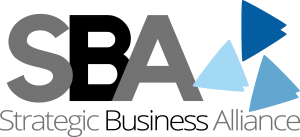The Business Case for Outsourcing Conveyancing: Cost, Efficiency, and Growth Nov 24, 2025

Conveyancing as a Key Revenue Driver
In the property sector, conveyancing remains one of the most critical yet resource-intensive processes. For many law firms and conveyancing practices, it’s a steady revenue driver that underpins growth and client trust. Yet, as competition intensifies and margins tighten, firms are increasingly scrutinising their operational models. How do you deliver faster turnaround times, maintain compliance, and still keep costs under control?
Outsourcing conveyancing—once viewed as a cost-cutting measure—is now emerging as a strategic lever for business transformation. Far from being a compromise on quality, it offers law firms and conveyancing practices an opportunity to scale, strengthen resilience, and sharpen their competitive edge.
This blog explores the commercial rationale for outsourcing conveyancing, focusing on cost efficiency, operational agility, and growth potential.
Cost Savings
Lower Overheads
Running a conveyancing department involves substantial fixed costs. Office space, IT infrastructure, and administrative support all consume valuable resources. When you outsource, the incremental fixed costs can be reduced on resourcing.
This flexibility is particularly valuable in Australia’s fluctuating property market, where volumes can swing between quarters. Outsourcing allows firms to adapt quickly without incrementally increasing costs.
Reduced Staffing and Training Costs
Recruiting, training, and retaining skilled conveyancers is a constant challenge. The demand for experienced professionals often outstrips supply, pushing up salaries and recruitment fees. Outsourcing partners like SBA can provide a critical resourcing solution to complement the in-house team.
Efficiency Gains
Faster Turnaround Times
Speed is everything in property transactions. Clients expect seamless communication and quick settlements. Outsourcing providers operate with dedicated teams that handle high volumes of conveyancing daily. Their structured workflows and experience across jurisdictions enable faster processing times.
Standardised Workflows and Quality Control
Internal conveyancing teams often operate with varying practices depending on individual experience or regional preferences. Outsourcing introduces standardisation. Providers employ systematised workflows, consistent documentation, and quality-assurance checks.
This consistency ensures fewer errors, reduces rework, and enhances compliance—especially important given the tightening of Australian regulatory standards around property transactions. The result is a more predictable and auditable process, which supports both client confidence and regulatory peace of mind.
Enhanced Focus on Core Competencies
By delegating administrative and procedural tasks to a outsourced provider, internal teams can redirect their energy towards higher-value work— client relationship management, strategic planning, and service expansion.
Instead of being tied up in repetitive administrative cycles, leaders can focus on building the business, deepening market penetration, and strengthening their brand.
Growth Leverage
Handling More Files Without Incrementally Increasing Hiring Costs
The property market is cyclical. When demand surges, capacity constraints can lead to missed opportunities. Outsourcing eliminates this bottleneck. Firms can handle more conveyancing files without needing to expand office space or hire additional staff.
Scalable service agreements enable quick ramp-ups during busy periods and cost control during slowdowns. This elasticity ensures that firms can seize every market opportunity without operational strain.
Expanding Service Offerings
With conveyancing efficiently managed, firms have room to diversify. They can develop complementary services such as property advisory, mortgage broking, or estate planning. The operational breathing space created by outsourcing fuels innovation.
Moreover, outsourcing providers often bring cross-functional insights from other clients and sectors. Leveraging these can help your business refine service delivery, adopt new technologies faster, and stay ahead of industry trends.
Risk Mitigation
Reducing Key Person Risk
In many firms, conveyancing knowledge is concentrated among a few senior staff. When one person leaves or takes extended leave, workflow can slow dramatically. Outsourcing spreads this knowledge across a team with built-in redundancies.
This structure protects against business disruption, ensuring that client deadlines and compliance obligations are met regardless of internal staffing changes.
Analysing Total Cost of Ownership
It’s not just about salary comparisons. The real cost of in-house conveyancing includes recruitment, software licences, office rent, insurance, and compliance overheads. By consolidating these into a total-cost figure, firms gain a clearer picture of the potential savings outsourcing offers.
Considering Transition and Governance
Transition planning is vital. Firms should identify which parts of the process to outsource— administrative tasks, contract preparation, or end-to-end file management—and define clear governance frameworks.
A successful outsourcing relationship depends on transparent communication, agreed-upon performance metrics, and regular review meetings. Many firms adopt a hybrid model initially— outsourcing specific functions before expanding scope once confidence is established.
Outsourcing as a Strategic Business Lever
Outsourcing conveyancing is no longer a reactive move to cut costs; it’s a proactive strategy to strengthen competitiveness, resilience, and growth capacity. It allows firms to reduce fixed overheads, deliver faster results, and pivot resources toward higher-value activities.
As Australian property markets evolve and client expectations rise, the ability to scale efficiently and maintain operational excellence becomes a defining differentiator. Outsourcing provides that flexibility—allowing firms to handle more files, adopt new technology faster, and safeguard against disruption.
The firms that thrive in the coming years will be those that embrace strategic partnerships and operational agility. Conveyancing, though often seen as transactional, is now a cornerstone of innovation and profitability. By treating outsourcing as a growth enabler rather than a cost-cutting exercise, businesses position themselves for sustainable success in a rapidly changing landscape.
